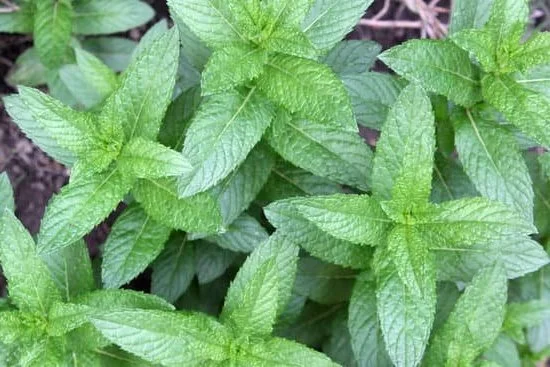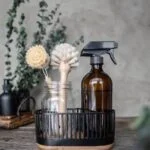Ayurvedic aromatherapy recipes have been used for centuries as a natural way to promote health and well-being. In this article, we will explore the principles and benefits of Ayurveda and how they can be applied to aromatherapy. Understanding the connection between these two ancient practices can help us create blends that not only smell wonderful but also support our overall health.
Ayurveda, often referred to as the “science of life,” is a traditional Indian system of medicine that has been practiced for over 5,000 years. It focuses on achieving balance within the body through a holistic approach that includes diet, herbal remedies, yoga, and meditation.
Aromatherapy, on the other hand, utilizes essential oils extracted from plants to promote physical and psychological well-being. By combining these two practices, we can harness the power of aromas to enhance our health in alignment with Ayurvedic principles.
In this section, we will delve into the fundamental concepts of Ayurvedic aromatherapy, including an exploration of different essential oils used in Ayurveda and their specific properties. We will also discuss how the five elements – earth, water, fire, air, and ether – are utilized in creating aromatherapy blends according to Ayurvedic principles.
As we continue through the article, you will discover specific recipes for balancing the doshas (vata, pitta, and kapha) using Ayurvedic aromatherapy and learn about recommended rituals and practices for enhancing its therapeutic effects. Whether you are seeking stress relief or looking for skincare and haircare tips using Ayurvedic aromatherapy recipes, this comprehensive guide will provide valuable insights into this ancient practice.
Choosing the Right Essential Oils
When it comes to Ayurvedic aromatherapy, choosing the right essential oils is essential for reaping the maximum therapeutic benefits. Each essential oil has its own unique properties and can be categorized based on the doshas – vata, pitta, and kapha. Here are some of the most commonly used essential oils in Ayurvedic aromatherapy and their specific properties:
- Lavender: Known for its calming and soothing properties, lavender oil is great for balancing vata dosha and promoting relaxation.
- Peppermint: With its cooling and refreshing nature, peppermint oil is excellent for pacifying pitta dosha and providing a feeling of freshness.
- Frankincense: This essential oil is often used for balancing kapha dosha due to its grounding and uplifting effects on the mind and body.
- Rose: Rose oil is highly regarded in Ayurveda for its ability to balance all three doshas, making it a versatile choice for aromatherapy blends.
In addition to these traditional essential oils, there are many others that are used in Ayurvedic aromatherapy, each with its own unique set of characteristics. It’s important to understand the specific properties of each oil in order to create effective blends that cater to individual needs.
Furthermore, understanding the energetics of each essential oil according to the principles of Ayurveda is crucial. For instance, some oils may have heating or cooling effects on the body, while others may be drying or moisturizing. By considering these factors along with the doshic qualities of each oil, practitioners can craft personalized aromatherapy blends that promote balance and well-being.
The Five Elements in Ayurvedic Aromatherapy
Ayurvedic aromatherapy is based on the principles of Ayurveda, an ancient holistic healing system from India. According to Ayurveda, the universe is composed of five elements – earth, water, fire, air, and ether – and these elements are also present within our own bodies. In Ayurvedic aromatherapy, these elements are used to create essential oil blends that can help balance the doshas and promote overall well-being.
Each element has its own specific qualities and properties that can be harnessed in aromatherapy blends. Earth is grounding and nurturing, water is cooling and soothing, fire is invigorating and transformative, air is light and uplifting, and ether is expansive and connecting. By understanding these elemental qualities, practitioners of Ayurvedic aromatherapy can create blends that address imbalances within the body and mind.
For example, if someone has an excess of the fire element (pitta dosha), they may benefit from using cooling essential oils like peppermint or rose to bring balance. If there is a deficiency in the earth element (vata dosha), grounding oils such as sandalwood or patchouli can be used to promote stability and calm. By carefully selecting essential oils based on their elemental properties, Ayurvedic aromatherapy aims to restore harmony within the individual.
In addition to addressing specific doshic imbalances, Ayurvedic aromatherapy also takes into consideration seasonal influences on the body and mind. Different times of year can have different elemental qualities dominant in nature, so adjusting aromatherapy blends accordingly can help maintain balance throughout the changing seasons.
This holistic approach reflects the core principles of Ayurveda, emphasizing the interconnectedness of all aspects of health and wellness. Incorporating these principles into aromatherapy practices can enhance its therapeutic effects by aligning with the natural rhythms of life.
Ayurvedic Aromatherapy Recipes for Balance
In Ayurveda, the doshas – vata, pitta, and kapha – are fundamental energies that govern all physical and mental processes. When these doshas are out of balance, it can lead to various health issues. Ayurvedic aromatherapy offers specific recipes for creating essential oil blends to balance the doshas and promote overall well-being.
For balancing vata dosha, which is associated with dryness, coldness, and irregularity, calming and grounding essential oils are recommended. Some examples of essential oils for vata imbalance include warming spices like cinnamon, ginger, and clove, as well as soothing scents like lavender, geranium, and frankincense. By mixing these essential oils in carrier oil or using them in a diffuser, individuals can experience a sense of stability and tranquility.
On the other hand, pitta dosha is characterized by heat, intensity, and inflammation. To pacify pitta imbalance, cooling and calming essential oils are beneficial. Some recommended essential oils for pitta imbalance include rose, jasmine, sandalwood, and chamomile. These floral and woody scents can help reduce irritability and promote a sense of coolness and relaxation.
Kapha dosha is linked to heaviness, lethargy, and stagnation. To counterbalance kapha imbalance, stimulating and invigorating essential oils are recommended. Examples of essential oils for kapha imbalance include eucalyptus, rosemary, juniper berry, and peppermint. These fresh and uplifting scents can help uplift mood and increase energy levels when used in aromatherapy blends or massage oils.
By utilizing these ayurvedic aromatherapy recipes for balance according to the specific needs of each dosha type vata,pitta,and kapha you can create harmonious blend that promotes not only a healthy body but also a calm balanced mind despite the stresses that come along our daily lives.
Rituals and Practices
Once you have chosen the right essential oils and created your Ayurvedic aromatherapy blends, incorporating specific rituals and practices can enhance the therapeutic effects of your aromatherapy sessions. In Ayurveda, the practice of using essential oils goes beyond simply diffusing them in a room. It involves creating a sacred and mindful space for healing and relaxation.
One recommended ritual in Ayurvedic aromatherapy is the use of oil massage, also known as Abhyanga. This ancient practice involves massaging warm oil infused with essential oils onto the skin to promote relaxation, improve circulation, and nourish the body. The type of oil used for Abhyanga can be customized based on your dosha or specific wellness goals.
Another important aspect of Ayurvedic aromatherapy rituals is the use of meditation and breathwork. Creating a calm and serene atmosphere with soft music or nature sounds can enhance the overall experience. Taking deep breaths while inhaling the aroma of the essential oils can help calm the mind and reduce stress levels.
Incorporating these rituals and practices into your ayurvedic aromatherapy routine can lead to a more holistic approach to healing and well-being.
| Rituals | Benefits |
|---|---|
| Abhyanga (oil massage) | Promotes relaxation, improves circulation, nourishes the body |
| Meditation and Breathwork | Calms the mind, reduces stress levels |
Ayurvedic Aromatherapy for Stress Relief
In today’s fast-paced world, stress has become a common ailment that affects many individuals. Fortunately, the ancient practice of Ayurveda offers a natural and holistic approach to stress relief through aromatherapy. Ayurvedic aromatherapy harnesses the power of essential oils to create a sense of calm and relaxation, promoting overall well-being.
Understanding the Principles of Ayurvedic Aromatherapy
Ayurvedic aromatherapy is rooted in the principles of Ayurveda, an ancient Indian system of medicine that seeks to balance the mind, body, and spirit. The use of essential oils in Ayurvedic aromatherapy helps to harmonize the doshas – vata, pitta, and kapha – which are considered as vital energies in the body according to Ayurvedic principles. By understanding one’s dominant dosha, specific essential oils can be chosen to alleviate symptoms of stress and bring about a sense of equilibrium.
Ayurvedic Aromatherapy Recipes for Stress Relief
There are several ayurvedic aromatherapy recipes specifically designed for stress relief. For example, a blend of lavender, chamomile, and sandalwood essential oils can help promote relaxation and reduce anxiety. Similarly, bergamot, clary sage, and frankincense essential oils are known for their calming properties. These recipes can be used for massage, added to bath water or diffused in the air to create a soothing atmosphere.
Rituals and Practices for Stress Relief
In addition to using ayurvedic aromatherapy blends, incorporating rituals and practices can enhance its effectiveness in relieving stress. These rituals may include practicing deep breathing exercises while inhaling the aroma from essential oil blends or meditating in a room filled with calming scents. Furthermore, creating a tranquil environment by dimming lights and playing soft music can create an ambiance conducive to relaxation when using ayurvedic aromatherapy techniques.
By understanding the principles of Ayurveda and choosing the right essential oils based on those principles one can easily create effective ayurbedic aromotherapy blends that will work wonders for relieving stress and promoting relaxation.
Ayurvedic Aromatherapy for Skin and Hair Care
Ayurvedic Aromatherapy for Skincare
In Ayurveda, skincare is considered an important part of maintaining overall health and wellness. The use of essential oils in skincare routines can help address various skin concerns such as acne, dryness, and aging. Some popular essential oils used in Ayurvedic aromatherapy for skincare include rose, sandalwood, and lavender. These oils are known for their soothing and rejuvenating properties, making them ideal for promoting healthy and radiant skin.
One simple ayurvedic aromatherapy recipe for a nourishing facial oil is to mix a few drops of rose essential oil with a carrier oil like coconut or jojoba oil. This blend can be used as a moisturizer to hydrate the skin and improve its elasticity. Additionally, adding a drop of lavender essential oil to a gentle cleanser can help soothe irritated skin and minimize blemishes.
Ayurvedic Aromatherapy for Haircare
In Ayurveda, hair is considered as an extension of the body and is therefore given much importance in maintaining overall well-being. Essential oils such as jasmine, peppermint, and ylang-ylang are commonly used in Ayurvedic aromatherapy for haircare due to their nourishing and stimulating properties. These oils can promote hair growth, strengthen the hair follicles, and add luster to the hair.
An effective ayurvedic aromatherapy recipe for promoting healthy hair is to mix a few drops of ylang-ylang essential oil with a carrier oil such as almond or coconut oil. This blend can be massaged into the scalp to stimulate blood circulation and nourish the hair roots. Adding a drop of peppermint essential oil to a mild shampoo can also help improve scalp condition and add volume to the hair.
Tips for Using Ayurvedic Aromatherapy for Skincare and Haircare
When incorporating ayurvedic aromatherapy into your skincare and haircare routines, it’s important to choose high-quality essential oils that are free from synthetic additives. Always perform a patch test before using any new essential oil to ensure that you do not have any allergic reactions.
Additionally, it’s advisable to dilute essential oils with a carrier oil before applying them directly onto the skin or scalp to avoid irritation. By following these tips and experimenting with different ayurvedic aromatherapy recipes, you can create personalized skincare and haircare products that cater to your specific needs while harnessing the therapeutic benefits of Ayurveda.
Precautions and Considerations
In conclusion, Ayurvedic aromatherapy offers a holistic approach to health and well-being, combining the ancient wisdom of Ayurveda with the therapeutic benefits of essential oils. By understanding the principles of Ayurveda and choosing the right essential oils based on their specific properties, individuals can create personalized aromatherapy blends to balance their doshas and promote overall harmony. The incorporation of the five elements – earth, water, fire, air, and ether – further enhances the effectiveness of these blends according to Ayurvedic principles.
The provided Ayurvedic aromatherapy recipes for balance offer practical ways to address imbalances in vata, pitta, and kapha doshas, while also discussing rituals and practices for maximizing the therapeutic effects. Additionally, Ayurvedic aromatherapy can be utilized for stress relief by creating soothing blends that promote relaxation. Moreover, it can also be beneficial for skincare and haircare through its nourishing and rejuvenating properties.
It is important to note key precautions and considerations when practicing Ayurvedic aromatherapy in order to ensure safety and maximize efficacy. This includes being mindful of individual sensitivities or allergies to certain essential oils, as well as understanding proper dilution techniques. By embracing these guidelines, individuals can fully experience the healing potential of Ayurvedic aromatherapy while prioritizing their well-being. Overall, incorporating Ayurvedic aromatherapy into one’s self-care routine can lead to a deeper sense of balance and vitality.
Frequently Asked Questions
Which Essential Oils Are Best for Ayurveda?
In Ayurveda, some of the best essential oils to use are those with grounding and calming properties, such as sandalwood, patchouli, and vetiver. These oils are believed to help balance the doshas and promote overall well-being.
How to Smell Good According to Ayurveda?
According to Ayurveda, smelling good goes beyond just using perfumes. It involves maintaining a proper diet, staying hydrated, practicing good hygiene, and using natural scents like rose water or jasmine oil to enhance your natural fragrance.
How to Make Your Own Ayurvedic Body Oil?
Making your own Ayurvedic body oil can be simple and personalized. Start with a base oil like sesame or coconut oil, then add a few drops of essential oils based on your dosha or personal preferences. It’s a way to nourish your skin while enjoying the therapeutic benefits of aromatherapy.

Are you looking for a natural way to improve your health and wellbeing?
If so, aromatherapy may be the answer for you.





